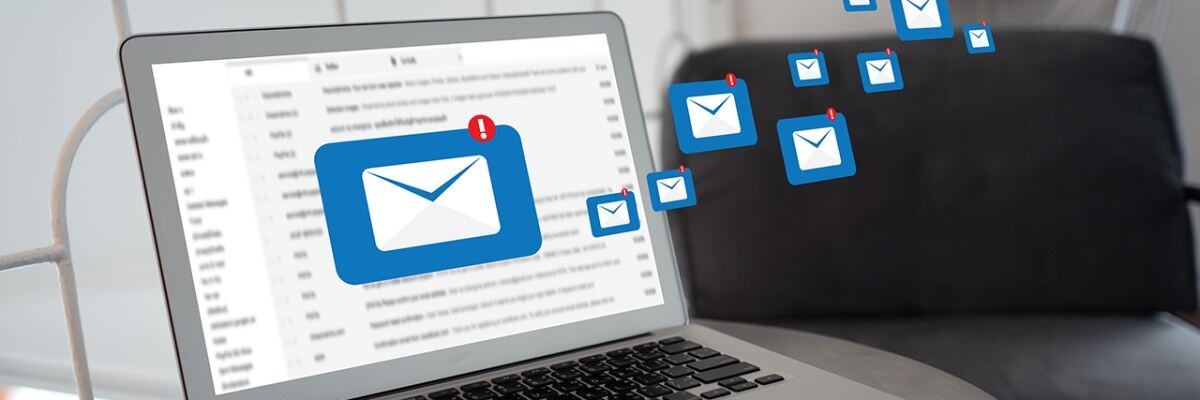Editor's note: This post was originally published on May 29, 2018 and has been revised for clarity and comprehensiveness.
Do you want security software to protect your business from phishing scams? Will that be enough?
The truth is, even the best tools can’t prevent human error. That’s why you must build phishing awareness in your company.
At Intelligent Technical Solutions (ITS), we help businesses stay secure, productive, and compliant through security services, managed IT, and IT consulting. Our team empowers small and mid-sized organizations to navigate cyber threats, and we want to prevent you from falling for them.
In this article, we’ll explain:
- What is phishing?
- What are the common signs of phishing?
- What do you do if your team falls for phishing?
- How can you prevent phishing attacks?
By the end of this article, you’ll have the information you need to protect your company from phishing attacks.
What is phishing?
What is phishing?

Phishing is a cyberattack where a scammer impersonates a legitimate source – like your bank, cloud software vendor, or even your coworker — to trick you into revealing sensitive information.
These attacks are usually carried out via email but can also happen through phone calls (vishing), text messages (smishing), or even fake websites.
Employees may unknowingly expose your business to major risks because of phishing, without knowing they’ve done anything wrong.
READ: 6 Most Dangerous Types of Phishing Scams to Watch Out for
What are the common signs of phishing?

Have you ever said, “I’d never fall for that!” after seeing someone (in your life or on the news) fall victim to a scam?
Never say never. It only takes one inattentive moment to leak information. Here are some signs of phishing to drill into your team and lessen the likelihood of successful phishing attempts.
1. Suspicious sources
Phishing attacks always come from sketchy sources masquerading as credible. Email phishing attempts, for example, often use slightly off email addresses — like support@micr0soft.com or john.doe@yourcomapny.com. Smishing attempts will hijack companies’ official text threads on your phone.
A glance might not catch the misspelling or ping it as a strange message.
2. Generic greetings
Emails, texts, or calls that start with “Dear Customer” or “Valued User” instead of your name are often mass phishing campaigns.
Be wary – just because someone uses your name doesn’t mean they’re legitimate. Due to the mass selling of data and freely given online information, it’s easier than ever for phishing attempts to find your personal details.
3. Urgency or fear tactics
Phrases like “Your account will be locked in 30 minutes” or “Last chance to claim your refund” are designed to rush your judgment and get information quickly.
Never trust messages like this before verifying them. If there’s a possibility the information is true, call or email the person/company through official channels.
4. Unusual links or attachments
Don’t click if the URL looks strange or doesn’t match the sender’s domain.
Even if it is from a trusted source, if the linked page asks for credit card details, approval for a downloadable program, or your Social Security number to save puppies from drowning right this instant, do not immediately believe it. Contact the organization or person from a verified number or website first.
Attachments with unfamiliar extensions like .exe or .scr are another red flag. Do not download these programs as they’re commonly malware.
5. Unexpected requests for sensitive information
No legitimate company will ask you to confirm your birthday, login credentials, or banking details over email. Or if they do ask for documents over email, it should be after you call them to process a request.
What do you do if you fall for a phishing scam?
Don’t panic. Mistakes happen. If you or someone on your team clicks a phishing link or opens a suspicious attachment, you must quickly implement damage control.
Here’s what to do:
1. Disconnect from the network
Unplug the affected device from Wi-Fi or Ethernet to prevent malware from spreading to your network.
2. Contact your IT team or MSP
Notify your internal IT department or your managed IT service provider (MSP) immediately. They can further assess the threat, isolate affected systems, and do more damage control.
3. Follow your incident response plan
Your IT team will lead the charge and assess the extent of compromised systems and information. Ideally, you’ll have an incident response plan ready to go. It’s time for you to implement it.
If you don’t have an incident response plan, here’s what you must do in a security incident.
READ: Security Incident or Data Breach: What’s the Difference?
4. Report the incident
Inform any impacted parties and, if necessary, report the breach to regulatory authorities. Keeping a paper trail also helps if legal or compliance issues arise later.
How do you prevent phishing attacks?
You can’t stop scammers from sending phishing emails, but you can make your company a difficult target.
1. Train your team regularly
Security awareness training is your first line of defense. Conduct phishing simulations and cybersecurity awareness training at least quarterly.
2. Implement email security solutions
Deploy solutions that filter out malicious emails before they reach your team’s inboxes. Get your IT team to look closely at your company’s email policies and check if you have complementary security software like Microsoft Defender.
3. Use Multi-Factor Authentication (MFA)
Require MFA for all critical systems and email accounts. Even if credentials are stolen, this extra layer prevents unauthorized access.
READ: What are the Types of MFA? (& the Best MFA For Your Business)
4. Restrict admin access
Limit administrative privileges to only those who genuinely need them. This reduces the damage if an account is compromised.
5. Get qualified cybersecurity professionals
Cybersecurity is a whole different ballgame from day-to-day IT maintenance. Make sure your team has the skills to prevent, protect, and recover from phishing attempts.
Ready to protect your company from phishing?
If you’re worried your business is vulnerable to phishing scams, you’re not alone. Many companies lack the in-house expertise to keep up with evolving threats. But that doesn’t mean you’re powerless.
Getting tricked into opening the door to cybercriminals can be solved with the right mix of education, tools, and expert support.
At Intelligent Technical Solutions, we specialize in helping small and mid-sized businesses stay ahead of phishing scams through managed cybersecurity, employee training, and incident response planning.
Don’t let one bad click cost your business everything. Book a quick discovery call to learn how we can help protect your team, your data, and your reputation.
If you want more information about phishing scams and cybersecurity before reaching out, here are some free resources:
Kharmela Mindanao
Kharmela Mindanao is a senior content writer for Intelligent Technical Solutions. She’s called Ella by her friends and likes yoga, literature, and mountain climbing. Her favorite book is Anxious People by Fredrik Backman. She creates art and poetry and is on a quest to find the best cheesecake.



